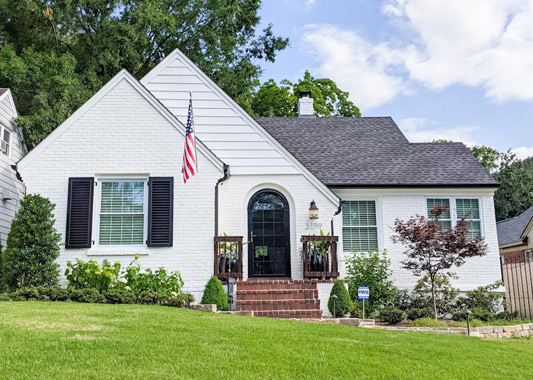By Rob Watson
Created 2010-05-18 17:51
It’s been awhile since I’ve written about some of the big picture stuff and my inspiration to do so comes from Tom McKeag’s immensely thought-provoking piece, “Giving Green Buildings a Smarter Skin.”
I can imagine two basic reactions to Tom’s piece, the deep breath followed by “Whoa, that’s cool,” or the “What a waste of time, that’ll never happen!” I’m not so subtly in the first camp, though admittedly the practical side of me is rolling its eyes at the radical departure from building buildings as we know them.
The heart of what McKeag is talking about, I believe, is rooted in Professor Donella Meadows’ Leverage Point No. 4 of her 12 most effective leverage points for promoting change in a system: “The Power to Add, Change, Evolve, Self-organize System Structure.” The other thing I loved about McKeag’s piece was the whole different way of thinking, which occupies the top three most effective spots in Meadows’ hierarchy.
I heard an astonishing fact recently: China’s buildings last an average of only 35 years! I was floored: A 5,000+ year old culture was making buildings of some of the most durable materials known to humankind — concrete and steel — and yet the buildings only endured 35 years. Given that the embodied energy of building materials represents between 15 percent and 18 percent of ALL energy used in the country each year, the wastage implied by this statistic is mind numbing.
Why are these buildings lasting so few years? One reason is that China’s buildings are unable to adapt to the rapidly changing needs of the market and the country’s burgeoning wealth with the opportunities and appetites that success brings. Back in 1994, Whole Earth Catalogue Founder Stewart Brand wrote a fascinating book: “How Buildings Learn” that talks about buildings that are sufficiently flexible to adapt to changing needs.
One silver lining of the financial retrenchment is that existing building retrofit and greening is getting a hard and favorable second look by companies seeking to upgrade their facilities. The One American Row building in Hartford, headquarters of the Phoenix Companies, just received LEED EB certification. This 1963 vintage building is notable for its Modernist style and the fact that it is one of the few LEED certified buildings also on the National Register of Historic Places.
This is one of the fascinating things about the materials innovations emanating from the biologically inspired Self-Activated Building Envelope Regulation (SABER) program that is discussed in McKeag’s piece: Materials — such as a building envelope — that are normally regarded as fixed, rigid and static may one day become flexible, adaptable and able to evolve with the needs of the building and its occupants. In this way, materials take on some of the learning and adaptive nature of information flows that are represented by the Internet.
Given the accelerating pace of global weirding, I believe that buildings will need to become even more adaptive to wide ranges of external conditions and be able to do so with a minimum of resources. This is why the research into biomimicry is so interesting to me. Nature is so much of a better designer than humans that we can learn a lot from how natural structures are put together — not unlike the example of the lotus leaf that keeps out moisture from a certain angle when the plant is fully hydrated, but allows it in when it is parched.
Speaking of cool biologically inspired examples, the winner of the Metropolis Next Generation Design Competition is the result of a fancy fusion of chemistry and a little gross biology.
There is a natural process called microbial-induced calcite precipitation that makes sandstone-like materials out of sand, salt and a little pee, well, at least the urea part of it. As it turns out, there are lots of little critters living among the grains of sand that, when peed on glue together to avoid getting wet. Not really, but it’s a funny image. The bacteria in the sand react biologically and chemically with the salt (calcium chloride) to glue the sand grains together to make a brick-like substance. The bad news at this point is that the process currently produces a fair amount of ammonia off-gas and reacts at, well, the pace of nature.
We’ve had a great line-up of articles from the past week.
Cleveland, long an unsung hero in the green building pantheon, now can add the Indians baseball team to its list of green achievers. In concert with the Natural Resources Defense Council, the Indians have implemented a wide range of measures, including an extensive solar electricity system and a recycling program that diverts over 20 percent of the stadium’s waste.
Physicians are not just healing themselves and others, a new green procurement program from Kaiser Permanente requires all purchases to be subject to a new Sustainability Scorecard that makes disclosure of environmental impacts of producing, obtaining, using and disposing of products a must for all medical goods they purchase.
And the industry group Practice Greenhealth wants to put the OR into the Green ER with its “Greening the OR Initiative.” Operating rooms can generate up to 30 percent of a hospital’s waste and as regulated medical waste can cost 10 to 15 times more than regular garbage.
Rob Watsonis the executive editor of GreenerBuildings.com. You can reach Rob at rob.watson@greenerworldmedia.com or follow him on Twitter@KilrWat
——————————————————————————–
Source URL: http://www.greenbiz.com/blog/2010/05/18/building-intelligence-greener-buildings



 Photo Credit: Caldwell House, TN
Photo Credit: Caldwell House, TN